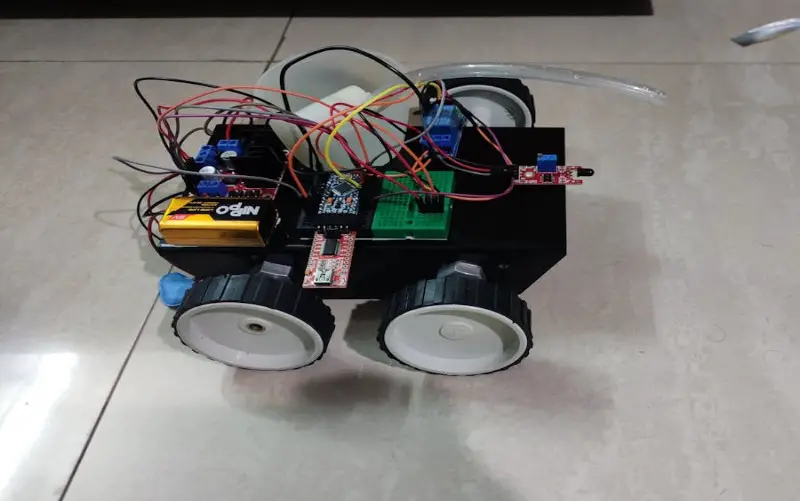DIY refers to the practice of performing a work oneself without the assistance of a professional or of purchasing things from a retailer or an artisan. The greatest, simplest, and most recent basic low-cost electronics project ideas are presented below in this post. The electronics projects below are a collection of innovative and unusual electronics-based ideas for students, academics, and engineers. Reading over each of the project ideas below may provide you with the ideal inspiration.
1. Generate Electricity By Walking Power Generator Floor Tiles Project
The need for power is expanding. The worry of electricity depletion is great since it is produced using non-renewable resources. The idea behind this technology is to use tiles to produce power. Generating off-grid electricity simply by moving around or using your footsteps to illuminate the streets. The components of this system are three generators, two racks and pinions, and a spring. The idea behind these tiles is that when someone walks on them, they would sort of uproot vertically. A rotatory action created by this vertical growth results in electrical liveliness.
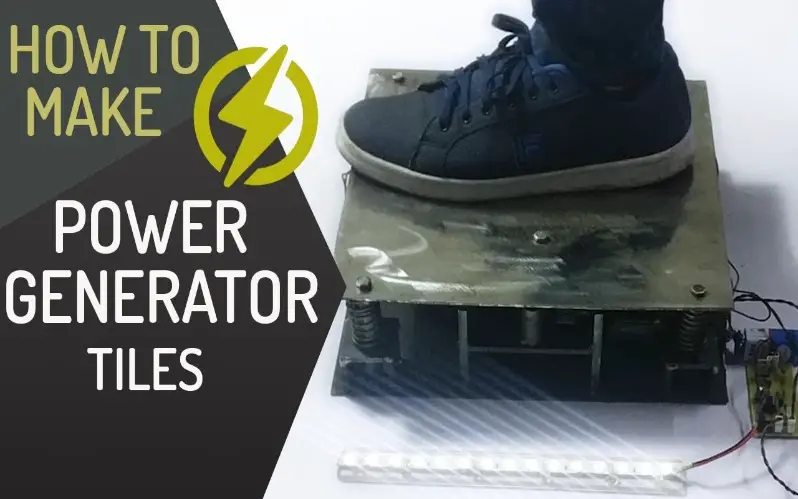
2. Rotating Solar Panel Using Arduino Project
Rotating solar panels are used in this Arduino-based project. The point from which solar energy may be captured is determined by the spinning solar panel’s scan from one horizon to the next. A motor to spin the solar panel is controlled by an Atmega 328 microcontroller, and the Arduino platform is used to power it to charge a 12V DC battery. By adjusting the Solar Board such that it is pointed dependably directly at the Sun, we can equip the majority of it. This project thereby increases the effectiveness and, therefore, the brilliance of the process of saddling solar energy.
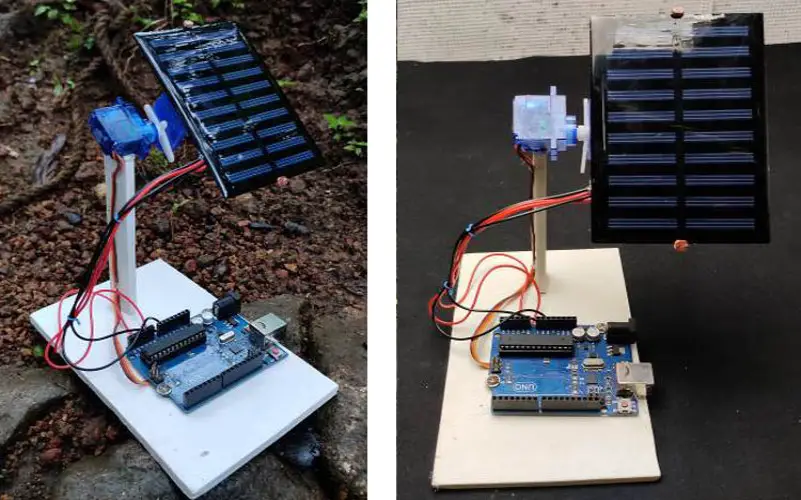
3. Arduino Ultrasonic Sonar/Radar Monitor Project
The immediate region is watched over, and suspicious objects are scanned by this military sonar espionage device. A lot of lives can be saved because of the sonar radar’s ability to stop opponents from getting close to a target. Ultrasonic to activate sonar, an LCD, and a motor to spin the sensor make up this Arduino-powered system. By doing so, the system is better able to track the object’s precise location and trajectory.
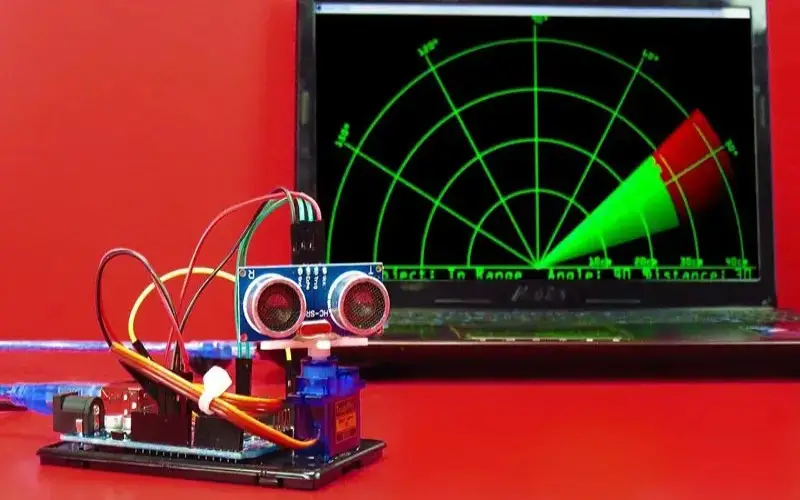
4. Motion-Controlled Pick & Place Obstacle Avoider Robotic Vehicle Project
Controlled by motion Without pressing a single button, a robotic vehicle may be moved by tilting. The concept suggests a robotic vehicle that is entirely controlled by hand motions and also supports pick and place movements. Typically, remote controls are used to operate robots, although these controls aren’t always convenient. The motion commands supplied by the accelerometer sensor by RF to the receiver unit are sent by the system using an Atmega microprocessor. The receiver is also converted into motion commands using microcontrollers from the 8051 series.
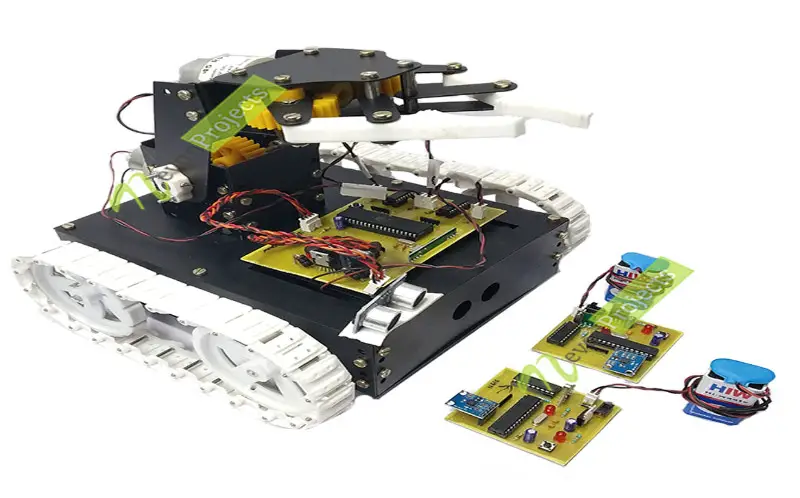
5. Regenerative Braking With Power Monitor Project
The lengthy battery charging process and lack of charging stations are the major problems preventing the widespread use of electric cars. To track the quantity of power created, we have designed a technology that enables automobiles to generate energy whenever brakes are engaged. This method makes use of a brake drum’s friction lining configuration. Additionally, circuitry is being employed to monitor the voltage produced by the braking press. Every time the brake is engaged, this mechanism assists in charging the vehicle’s battery. Additionally, it is a zero-pollution transportation system.
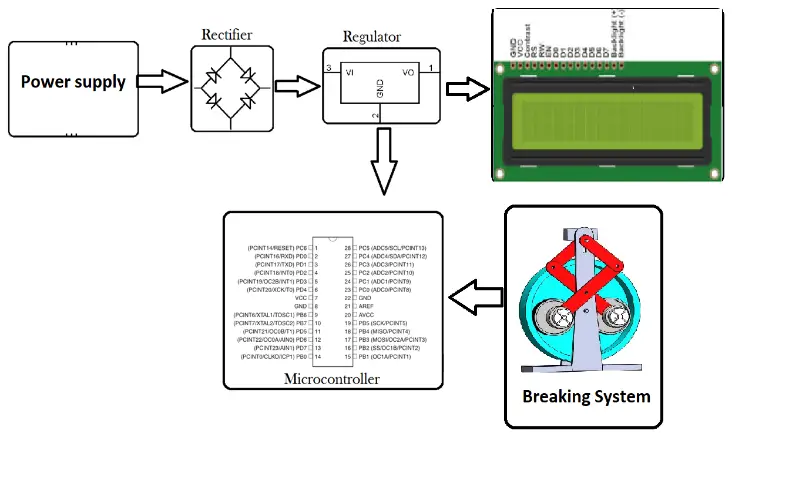
6. Third Eye For Blind Ultrasonic Vibrating Glove Project
It employs vibration and audible signals to alert the user to the obstacle in front of them. Ultrasonic range finder distance sensor module and Atmega 328 microcontroller are both used in the system. The distance of a hurdle is detected and measured using this ultrasonic sound. Additionally, this device contains a buzzer that emits vibrational signals. The frequency rises as the distance between the glove and the item decreases, overcoming the visual impairment through increased audio and vibration.
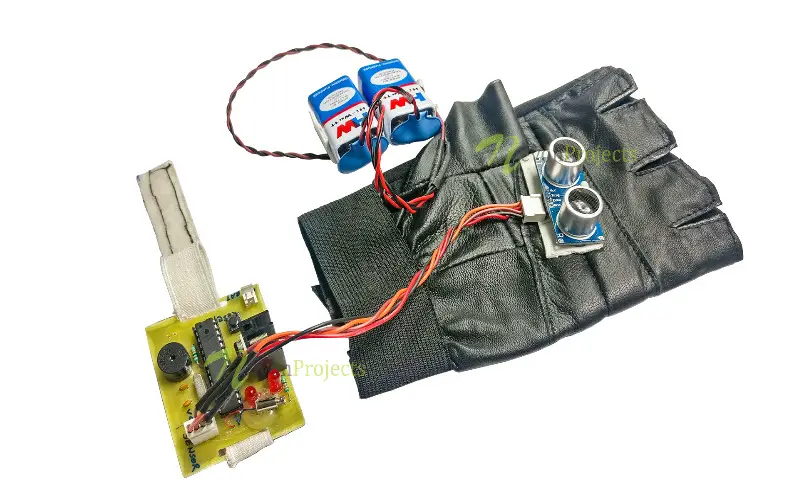
7. Smart Dustbin With IOT Notifications Project
There is more rubbish in and around metropolitan areas as a result of population growth. Here, we suggest an ingenious dustbin that uses IoT and sensor-based electronics to solve this problem automatically. This trash can automatically opens in response to a foot tap or clap. This smart trash can contains a sensor to detect claps and a level-sensing ultrasonic sensor that continuously monitors the amount of trash inside and alerts the user when the bin is ready to overflow. This trash can is entirely automated, allowing for rubbish cleanup.
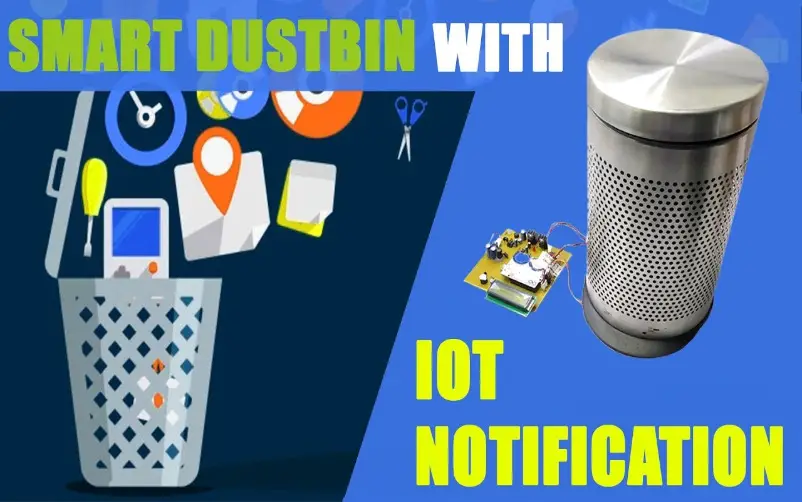
8. Smart Stand-up Wheelchair Using Raspberry Pi And RF Controller Project
Disabled folks can effortlessly move about thanks to this advanced technology. When trying to get from one area to another, people with paralysis problems frequently encounter difficulties. A servo motor, RF, GSM, GPS, and graphical LCD and RF module are all parts of this Raspberry Pi-powered system. It also includes a wheelchair. A wheelchair may be driven by voice command. Additionally, it contains an emergency function that allows the user to talk in an emergency via the microphone or the emergency button. Users can utilize buttons to stand, walk forward, or go backward.
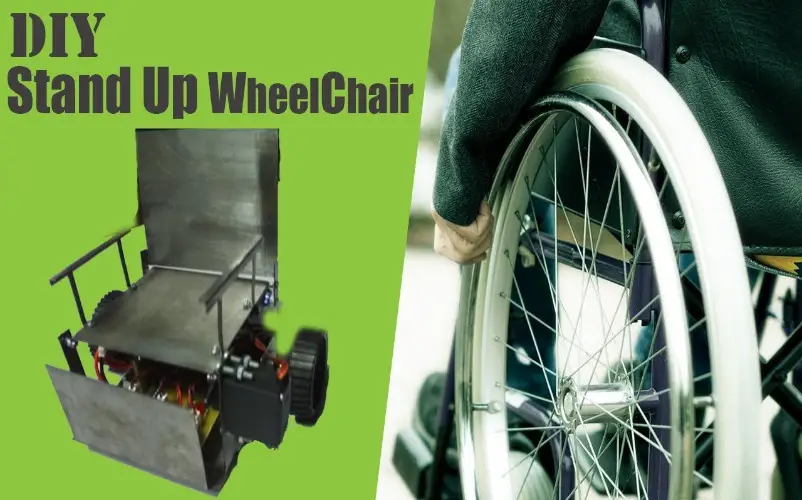
9. IOT Color-Based Product Sorting Machine Project
Through image processing, this innovative method for categorizing products introduces a technique to recognize color. This device, which is run by a Raspberry Pi, includes a motor and a camera that uses electronic circuits. An item is fed into the camera chamber using a motor. The moment a color is recognized, a signal is sent, and the motor uses a sorting mechanism to move the sorting tube in the direction of the appropriate section. Industries that sort candies can employ this approach.

10. Arduino-Based Autonomous Fire Fighting Robot Project
It is a self-working firefighting robot. It can sense the flame and extinguish the fire. It consists of an ultrasonic sensor and servo motor. It has a water tank and spraying mechanism and helps extinguish fires without the risk to life. Also, it is easy to build at home.
